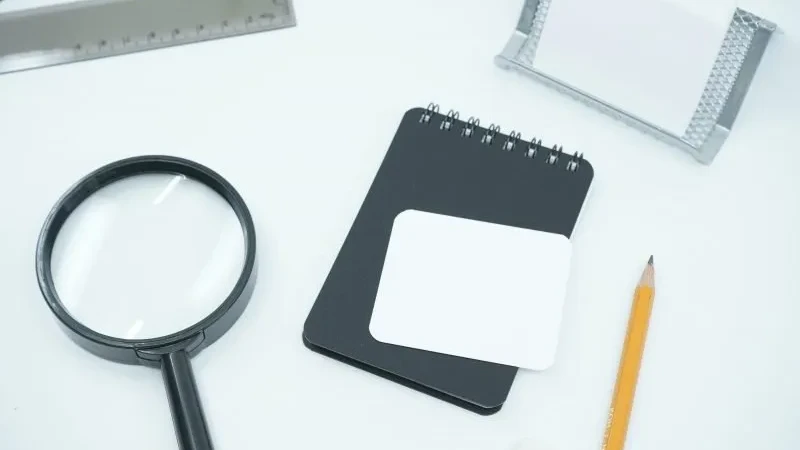Finding the truth in a workplace investigation is incredibly important in ensuring that all parties involved are treated fairly and any malpractice is addressed effectively. The last thing you want to achieve is a false accusation against an innocent person but navigating all the different opinions, arguments and evidence can be difficult.
However, there are some practices that you can incorporate that will help you find the truth in the most effective way possible and as an employer, it’s not only necessary to be aware of what these are but to actively implement them during workplace investigations. There are a number of methods available and what you decide to utilise in a particular investigation will depend on the dynamics of the situation, your purpose and who you’re working with.
What methods can you use to find the truth?
1. Be prepared and plan in advance
The first step should always be to have a plan in place for how you and any other relevant authorities have decided to approach the investigation. This includes collating all the information and evidence you already have, for example, any initial complaints, relevant emails, reports or warnings.
There are a number of other decisions you will also need to make such as:
- What company policies are or may become relevant
- How will the interview be recorded? Will there be a recording device or a person taking notes?
- Be aware of the purpose of your investigation and what you hope to gain from it
All of these considerations will influence what questions you ask and whether you are successful in finding the truth in a workplace investigation.
2. Make sure the person knows why they’re being interviewed
Remember that open communication is an important aspect of a fair workplace investigation and that the interview is not meant to be secretive or intimidating. Often there are more than just one or two parties that need to be interviewed and many of them may be confused or a little scared and unsure of what’s going on. To make sure that everyone feels as comfortable and open to honestly discussing the circumstances, it’s important that they all know why they’re being asked to interview. They should also be assured of their rights and confidentiality, not only because this is best practice but also because it allows them to feel more secure in sharing information they may initially be hesitant to.
Additionally, it’s a good idea to inform the interviewee of details like:
The time, location, and date of the interview as soon as possible
Where they can seek extra support and information
Their responsibility to maintain confidentiality
Whether or not there will be any recording devices present
What they can expect to occur after the interview and any follow up procedures
3. Asking the right questions to the right person
The questions you ask and how you ask them will shape the outcome of the overall workplace investigation. It’s best to have a draft version of the questions prepared but it’s simultaneously just as important to not treat the draft like a strict script. Part of having a conducive interview will be using what you’re learning during the conversation itself to influence what you discuss – perhaps some planned questions become obsolete, or a need arises to ask additional questions that were not considered necessary beforehand
The questions should be open and encourage the interviewee to respond in detail. For example instead of starting with “Didn’t you….”, be more open with your phrasing by using language such as “Describe…” or “Explain…”.If you feel there could be more elaboration, gently prompt them to expand with follow up questions. Make sure not to ask multiple questions in a single instance because this often leads to one being forgotten, or important details to be excluded.
Finding the truth in a workplace investigation is also often a matter of questioning the right people so another aspect that must be considered is whether all the relevant parties are being included and tailoring your questions to each person and their particular involvement. For example, asking someone who was not present what they thought of a certain event will not necessarily aid you in the workplace investigation process.
4. Keep it professional
Your behaviour during the interview will set the tone for how it proceeds and will also influence what is gained from the session. Ensure that you are not overly casual or too cold in demeanour, stay polite and friendly but professional in reflection of your role. It’s also important that as the interviewer, you take control and guide the interview effectively. Keep the focus on the interviewee and their role and prevent the conversation from deviating into irrelevant topics. If the other party becomes visibly upset or aggressive, keep calm and remind them of their responsibility, what their rights and options are and offer a small break.

5. Avoid casting judgement or implying blame
The interviewee may have to delve into actions or behaviour that they may not be proud of or that you find personally unsavoury or unprofessional. As the interviewer, it is critical that you do not engage with your personal feelings and remain neutral. The interview session’s purpose is not to assign blame and it is absolutely critical to avoid behaving as if you’re judging the interviewee based on what they say. Doing so can make them defensive and reluctant to share more which will be detrimental to the workplace investigation.
6. Take note of visual communication
The interviewee’s body language can also say a lot about what they’re actually saying. This doesn’t mean you should start drawing conclusions based on a body movement or their tone but being aware of this can aid in gaining a general understanding of how the person feels about a subject. Are they becoming more defensive, passive, or aggressive based on the questions? Are they raising their voice or perhaps mumbling or stammering? These visual cues are important because they can ascertain the emotional response of the interviewee and hence aid in finding the truth of what occurred.
Being mindful of your own body language will also be helpful in encouraging open communication. Show that you are actively listening and engaging with the interviewee and make them feel heard. Try to keep your own movements open and avoid gestures like crossing your arms as it can denote a negative visual cue.
7. Implement positive confrontation
Positive confrontation refers to the discussion of subjects that may be sensitive but in a manner that is respectful to the person and conducive to the investigation. There is a high chance that you may need to bring up issues or events that are delicate or confront the person with something they did (only in the scenario you are certain of their actions). Using a positive confrontation model will allow you to gather the information you need for the workplace investigation and give the other person a chance to discuss their view of what occurred without the interaction becoming unprofessional.
8. Document the workplace investigation process and findings
Your findings during the interview will likely need to be reviewed by other people with authority that are involved in the workplace investigation. Making sure that you document the workplace investigation correctly and comprehensively will allow the investigation to proceed towards finding the truth as soon as possible. There may be a number of documentations you need to complete based on your company policies so ensuring that you’re aware of what you need to do in the follow up is a key responsibility. Adequate written records are also very helpful in the scenario that any legal proceedings occur and in future cases of misconduct or malpractice.
There are hence many considerations for employers when seeking the truth in a workplace investigation. Each employer must decide what methods and means to incorporate in their investigation processes, and this can change depending on the particulars of the case that arises. However, the above eight methods are ones that should be thought about carefully as they will prove to be important factors regardless of the nature of the situation.
Let's Get Started
Interested in learning more about how Polonious can help?
Get a free consultation or demo with one of our experts




